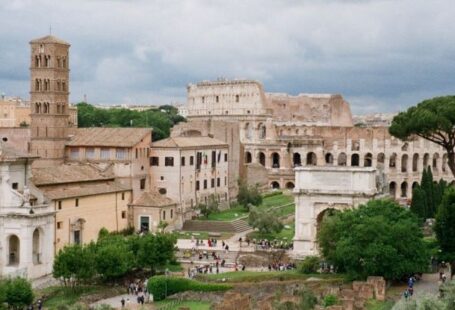Rome’s Ancient Temples: Unraveling Symbolism Through Design
The grandeur of Rome’s ancient temples continues to captivate visitors, drawing them into a world of architectural marvels and historical significance. Beyond their sheer size and magnificence, these temples are laden with symbolism that provides a deeper insight into the beliefs and values of the ancient Romans. By examining the intricate design elements of these structures, we can unravel the layers of symbolism that enrich our understanding of the religious and cultural practices of this ancient civilization.
Architectural Symmetry: Reflecting Balance and Harmony
One of the most striking features of Rome’s ancient temples is their architectural symmetry, characterized by the precise alignment of columns, pediments, and other structural elements. This emphasis on symmetry reflects the Roman ideals of balance and harmony, both in the physical world and in the spiritual realm. The meticulous design of these temples conveys a sense of order and stability, mirroring the Romans’ belief in the importance of maintaining equilibrium in all aspects of life.
The use of symmetry in temple design also served a practical purpose, as it enhanced the visual impact of these structures and created a sense of awe and reverence in those who approached them. By aligning the columns and other architectural elements along a central axis, Roman architects were able to create a sense of order and hierarchy that reinforced the temples’ symbolic significance as sacred spaces dedicated to the gods.
Symbolic Elements: From Columns to Capitals
Beyond their architectural symmetry, Rome’s ancient temples are replete with symbolic elements that convey deeper layers of meaning. The columns that line the facades of these temples, for example, are not merely decorative features but are laden with symbolic significance. The Doric, Ionic, and Corinthian orders of columns each carry distinct meanings related to strength, grace, and beauty, reflecting the diverse attributes of the gods to whom these temples were dedicated.
The capitals of these columns, with their intricate carvings and sculptural details, further enhance the symbolism of the temples. The acanthus leaves of the Corinthian capital, for instance, symbolize growth and abundance, while the volutes of the Ionic capital evoke the spiraling energy of the natural world. These decorative elements served not only to embellish the temples but also to imbue them with layers of symbolic meaning that enriched the religious experience of worshippers.
Sacred Geometry: The Divine Proportions
The design of Rome’s ancient temples also reflects the belief in the importance of sacred geometry, which held that certain proportions and ratios were inherently harmonious and divine. The use of geometric principles such as the golden ratio and the Fibonacci sequence in the design of these temples was believed to imbue them with a sense of cosmic order and perfection, aligning them with the divine principles that governed the universe.
The dimensions of these temples, from the height of the columns to the spacing of the steps, were carefully calculated to conform to these sacred geometric principles. By aligning their architectural design with these cosmic proportions, Roman architects sought to create spaces that were not only aesthetically pleasing but also spiritually resonant, inviting worshippers to connect with the divine forces that shaped their world.
Interpreting the Symbolism: A Window into the Roman Mind
In unraveling the symbolism within the design of Rome’s ancient temples, we gain a profound insight into the beliefs and values of the ancient Romans. The emphasis on symmetry, the use of symbolic elements, and the adherence to sacred geometric principles all point to a culture that revered order, balance, and harmony in both the physical and spiritual realms. By studying the design of these temples, we can glimpse the inner workings of the Roman mind and gain a deeper appreciation for the rich tapestry of symbolism that imbued their religious and cultural practices.
In Conclusion: Decoding the Language of Architecture
The design of Rome’s ancient temples is a testament to the ingenuity and creativity of the ancient Romans, who used architecture as a language to express their deepest beliefs and values. Through the careful arrangement of structural elements, the incorporation of symbolic motifs, and the adherence to sacred geometric principles, these temples speak to us across the centuries, offering a window into the spiritual world of an ancient civilization. In decoding the language of architecture, we unlock the hidden meanings and symbolism that lie within these magnificent structures, enriching our understanding of the cultural legacy left behind by the builders of Rome’s temples.





